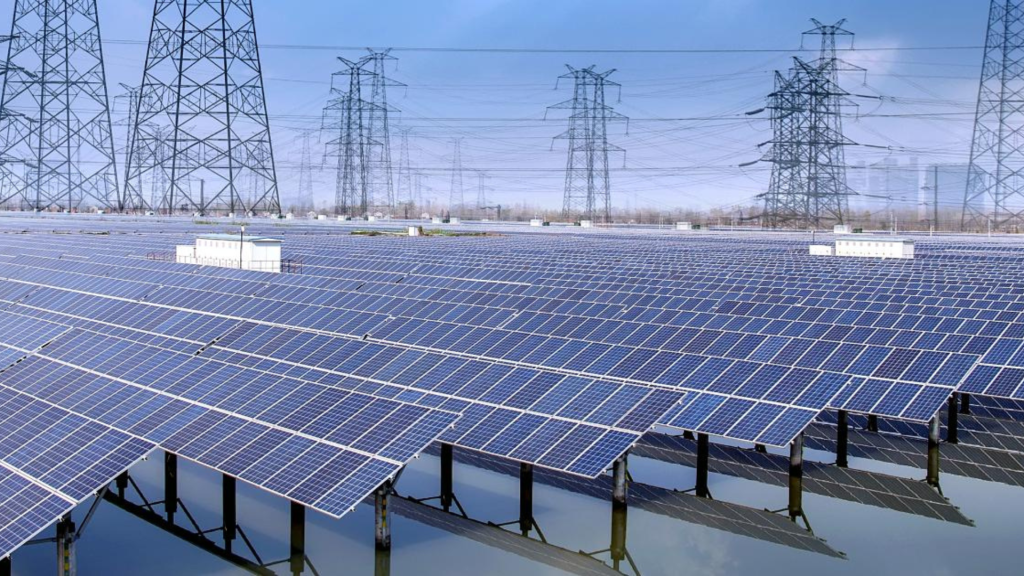Solar Project
A solar project involves the design, installation, and maintenance of solar energy systems to harness the power of the sun and convert it into electricity or heat. These projects can range from small residential installations to large-scale commercial and utility-based solar farms. Here’s an overview of the key steps and considerations when working on a solar project:
1. Project Planning and Feasibility
Before starting any solar project, a detailed feasibility study is essential. This includes:
- Site Assessment: Analyze the location to ensure it receives adequate sunlight. This can include looking at the geographical location, shading from nearby structures or trees, and the tilt and orientation of the roof or ground.
- Energy Needs: Understand the energy requirements of the facility or household to determine the appropriate size of the solar system.
- Regulatory and Permitting: Determine what permits are needed, and understand local regulations, building codes, and incentives like tax credits or rebates. Different regions have varying standards for solar installations.
- Budget and Financing: Assess the initial investment, potential government incentives, and financing options (e.g., loans, leasing, Power Purchase Agreements). Also, consider the long-term savings from reduced energy bills.
- Environmental Impact: Consider the environmental benefits, including reduction in greenhouse gas emissions.
2.Design and System Selection
Once the feasibility study is completed, the next step is the design phase.
- Type of Solar System: Decide between different types of solar power systems, such as grid-tied (connected to the grid), off-grid (independent), or hybrid systems.
- Grid-Tied: Solar system is connected to the electricity grid, allowing excess power to be sold back (net metering).
- Off-Grid: Typically used in remote locations where connecting to the grid is not practical. It requires battery storage.
- Hybrid Systems: A combination of solar and battery storage, providing energy security during outages.
- Solar Panels: Choose between different types of solar panels:
- Monocrystalline: High efficiency, more expensive.
- Polycrystalline: Less efficient, but more affordable.
- Thin-Film: Flexible and lightweight, but generally less efficient.
- Inverters: The inverter converts the DC power generated by solar panels into AC power. It’s crucial to select an inverter with sufficient capacity.
- Energy Storage: If using an off-grid system, or if you want to store excess power for use at night, choose appropriate battery storage solutions like lithium-ion batteries or lead-acid batteries.
- Mounting and Racking: Depending on the roof type or ground space, you’ll need the appropriate mounting and racking system to secure the panels.
3.Installation
After design, the installation process typically includes:
- Panel Installation: Positioning and mounting the panels in the most optimal way to maximize sunlight exposure (typically facing south in the Northern Hemisphere, and north in the Southern Hemisphere).
- Wiring: Connecting the panels to the inverter and the electrical grid or battery system, ensuring compliance with electrical codes and safety standards.
- Inverter Setup: Properly installing and configuring the inverter to handle the system’s energy load.
- Battery Storage (if applicable): Integrating battery storage systems to store energy for later use.
4.Testing and Commissioning
Once the system is physically installed, the next step is testing and commissioning the system:
- Performance Check: Testing the system to ensure that it operates as designed. This includes checking the output of the panels, inverter functionality, and safety systems (e.g., circuit breakers).
- Grid Connection: If the system is grid-tied, coordinating with the utility company to connect the system to the grid, ensuring compliance with local standards for interconnection.
- System Optimization: Fine-tuning the system for maximum efficiency, including adjusting the tilt of panels or ensuring they’re free from obstructions that could cause shading.
5. Monitoring and Maintenance
Solar projects require ongoing monitoring and maintenance:
- Monitoring: Many systems come with monitoring tools that allow you to track the performance of your solar installation (e.g., energy production, efficiency, etc.). This is crucial for detecting any issues early.
- Cleaning and Maintenance: Solar panels are low-maintenance, but they do require periodic cleaning to ensure that dust, dirt, and debris don’t reduce efficiency. Inverters may also require occasional checks to ensure proper functioning.
6. Cost and ROI
The cost of a solar project can vary widely based on size, location, and technology choices. On average:
- Residential Systems: Typically range from $10,000 to $30,000, depending on the size and complexity of the system.
- Commercial/Utility-Scale Systems: Can cost millions of dollars for large installations, but these often benefit from economies of scale.
Return on Investment (ROI): Solar projects can have a payback period of 5-15 years, depending on factors like energy savings, government incentives, and the cost of electricity in the area. After the payback period, the system generates free or significantly reduced electricity for the remainder of its lifespan (typically 25+ years).
Additional Considerations
- Energy Storage: With the increasing demand for renewable energy, energy storage is becoming more important. Batteries help store excess solar energy to be used later, which is particularly important in off-grid or hybrid systems.
- Smart Solar: Some systems integrate with smart home technology to automate and optimize energy usage (e.g., charging electric vehicles when solar energy production is high).

